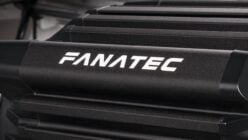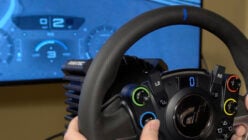This is the Thrustmaster T598, and it’s one of the most interesting and unusual sim-racing wheels to come out in quite some time.
What makes it so unique is its axial flux motor. Thrustmaster calls it “Direct Axial Drive”, and the company has made big claims that it is set to revolutionize the industry. Thrustmaster has sent us our very own T598 to review, and we’re going to find out exactly what this technology does for the driving experience and if it’s worth your hard-earned money.
Table of Contents
- What Is It?
- Direct Axial Drive Wheel Base
- Sportcar Wheel Rim
- Raceline Pedals LTE
- Driving Impressions
- Closing Thoughts
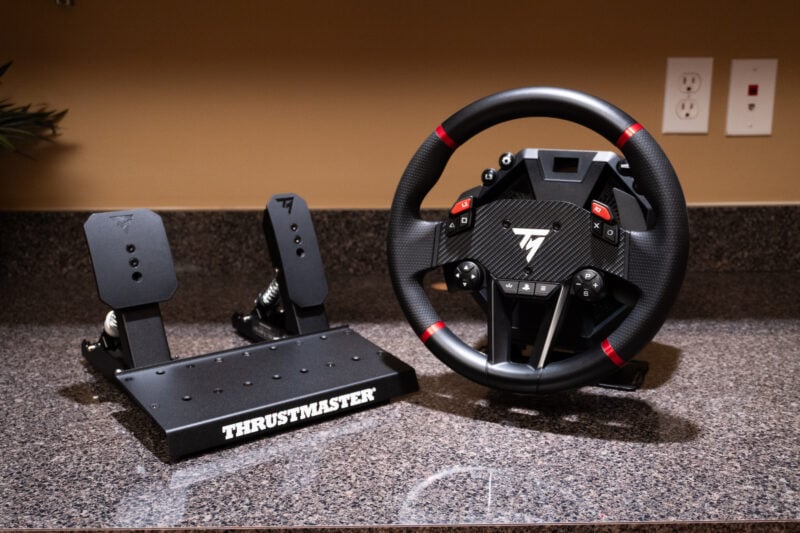
What Is It?
The T598 is compatible with the PlayStation 4, PlayStation 5, and PC. It includes an 11.8-inch (30cm) “Sportcar” wheel rim, and Thrustmaster’s Raceline Pedals LTE, an adjustable two-pedal set, with a 3-pedal load-cell option coming in 2025.
The wheel base uses Thrustmaster’s new Direct Drive quick release standard for wheel rims and is compatible with the rest of the company’s ecosystem of products. It’s priced at $499 USD / £449 / €499, with the first units shipping in November 2024.
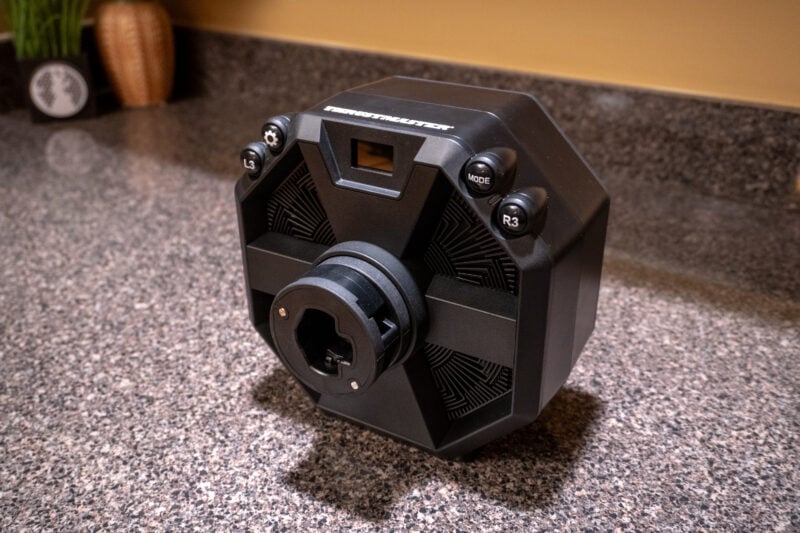
Direct Axial Drive Wheel Base
The headline feature is, of course, the Direct Axial Drive motor. To understand what that means, we need to do a quick review of how other force feedback systems work.
Belt-Driven Wheels
Most budget and mid-range wheels rely on belt-driven mechanisms, which transfer motor power to the steering shaft through a system of belts and pulleys. This design allows for smaller and more economical motors to be used, but there’s a trade-off in power and responsiveness. The belts introduce a slight lag and absorb some of the finer details of the car’s movements, leaving the player with a somewhat muted driving experience.
Radial Flux Direct Drive Wheels
Over the past few years, “direct drive” wheels have emerged at the higher end of the market. These direct drive wheels have — until now — all used “radial flux” direct drive motors attached directly to the steering column.
Radial flux motors are highly effective, but have some drawbacks of their own.
Managing the heat these motors generate adds to their complexity and cost, and their power might have to be throttled down to keep them from overheating. Other mechanical issues like magnetic saturation and eddy currents complicate their design, and a “cogging” effect as the magnets interact with each other must be mitigated with advanced software techniques that ultimately muddle the force feedback signal being delivered to the driver.
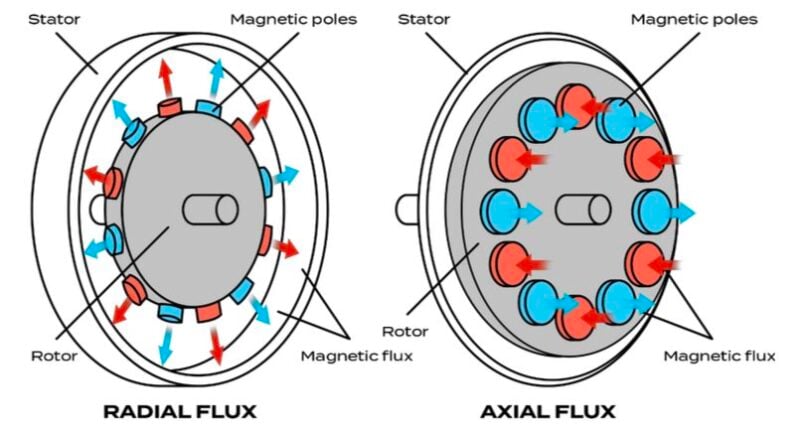
Axial Flux Direct Drive
To overcome all of these challenges, Thrustmaster has built the T598 with an “axial flux” direct drive motor.
As the name implies, the magnets are aligned on the same axis as the wheel shaft itself, completely changing the shape, design, and performance characteristics of the motor.
Axial motors have been around for quite some time, but were typically used in high-end industrial applications. They rarely appeared in consumer products, but recent manufacturing innovations have finally changed that.
By generating torque more efficiently, axial motors require less copper and produce less heat. Their design reportedly reduces cogging by over 99%, allowing for more precise force feedback without the need for complex algorithms or software interference. Additionally, axial motors enhance performance by capitalizing on controlled “overshoot”, delivering faster and more accurate feedback.
To help explain all of this, Thrustmaster has published two technical documents explaining the differences between radial and axial flux motors in more detail. If you’re interested in learning more, you can find them here and here.
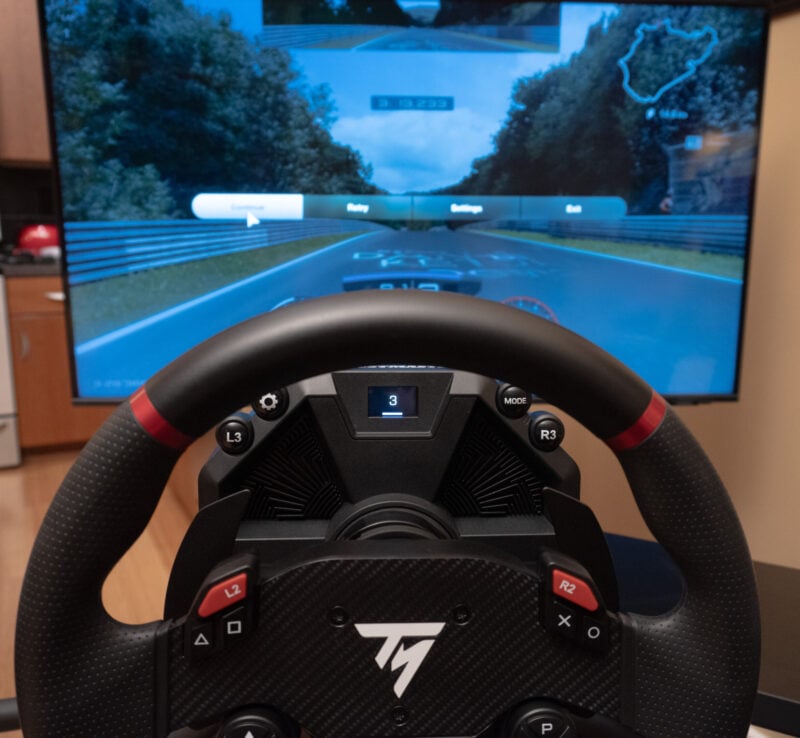
The Downsides of Axial Flux
Despite its advantages, there are some practical issues that complicate the use of the axial flux motor in a sim-racing setting. The radius of the motor’s stator is an important factor in the torque it can produce, which results in a larger wheel housing.
You can see the result of this in the unusual shape of the T598 wheel base. Unlike the boxy, elongated direct drive wheel housings of its competitors, the T598 is thin, wide, and tall, standing at 12.6 inches or 320mm in height. For something that sits between the driver and the screen, this can be a problem.
From the viewing position in my driving rig, the wheel and its housing block the lower portion of the screen in the middle. Of course, this won’t be a problem for everyone, but it’s something to keep in mind.
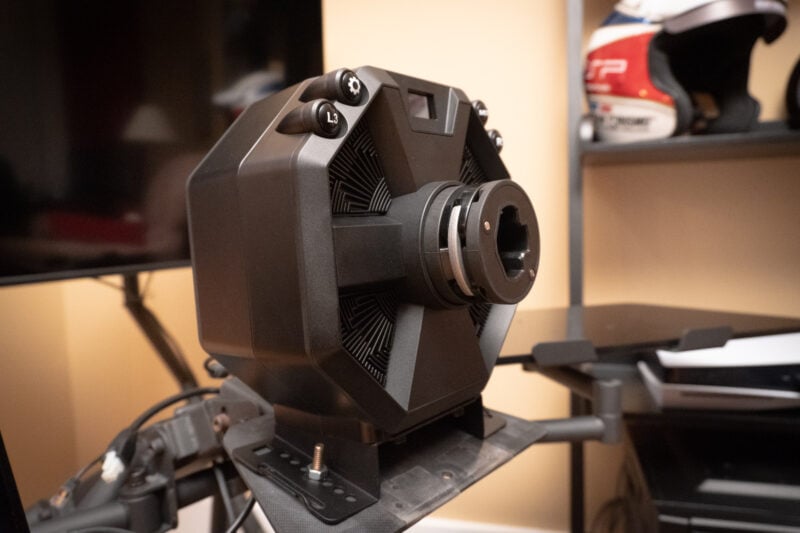
Mounting Issues
To further complicate things, the bolt pattern on the bottom of the wheel unit was not compatible with my Obutto rig.
Fortunately, a metal bracket is included which can be screwed into the bottom of the wheel. It’s designed to be used with the wheel’s table clamps, but also works as an adapter in case your rig does not have a matching bolt pattern.
The bracket is a welcome life saver, but it adds even a little more height to the overall unit, and can only be attached to my rig with two bolts. Of course, your mileage will obviously vary on this, but it is an important detail to not overlook if you plan on mounting the T598 to a rig.
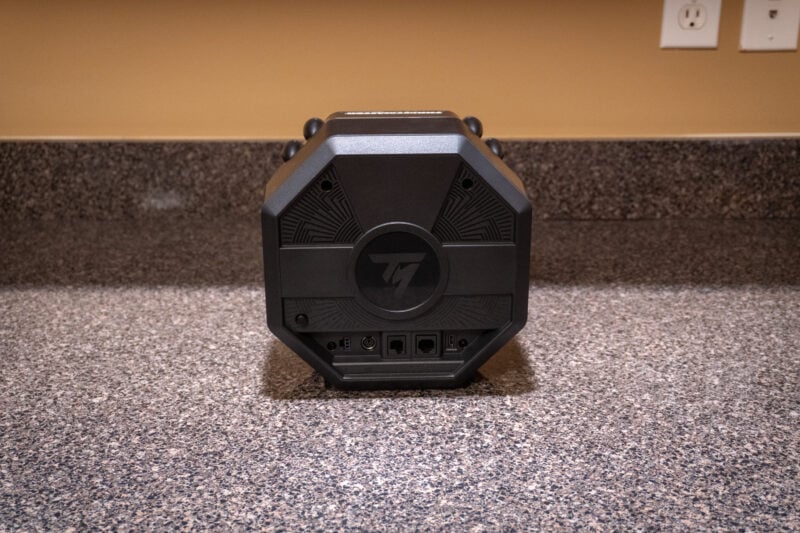
Compatibility and Connectivity
As noted earlier, the T598 uses Thrustmaster’s Direct Drive Quick Release standard and is compatible with all wheels that use or can be upgraded to this new system.
It’s easy to work with and holds the wheel securely. Just lift a clamp on the mount to open the release mechanism, slide the wheel rim into place, and lock it back down.
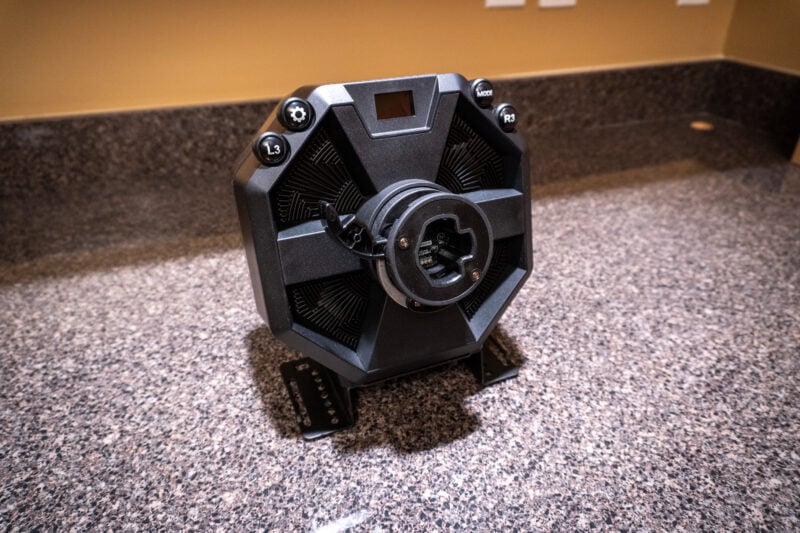
On the back of the unit, you’ll find a somewhat hidden on/off button, along with ports for power, a handbrake or shifter, the pedal connection, a USB-C port for connecting to a console or PC, and an unused port which will likely support other peripherals in the future.
You won’t need to press the on/off button very often, though, as the wheel seems to go to sleep and wake up on its own as needed.
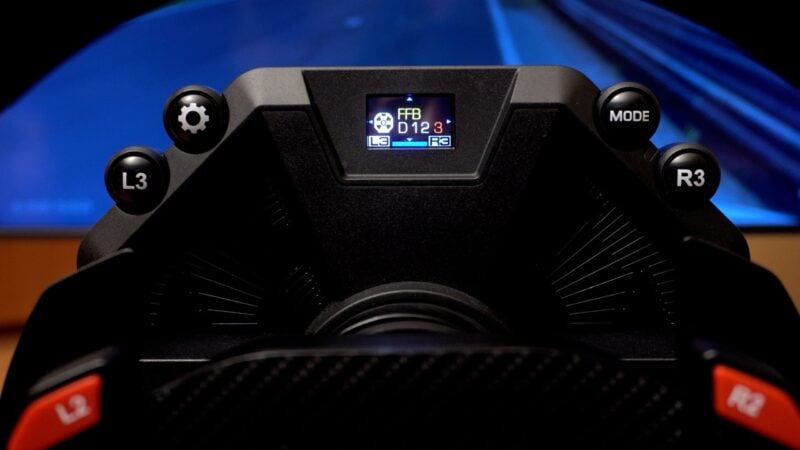
Buttons and Screen
The wheel base includes a small digital “Race Dash” screen that can show important information during your race, such as gear selection, RPM data, wheel configuration options, and more.
I was pleasantly surprised with the screen, which is bright, colorful, and high-resolution. Because of the wheel base’s height, it’s also incredibly important: when playing games like Gran Turismo 7, it’s the only way to see the engine revs or gear selection without peering over the housing to get a look at the bottom of the TV.
Using the buttons on the wheel base, you can view information like firmware versions, change advanced settings, or switch between different settings profiles. The configuration can be changed in real-time while you’re driving, so you can quickly find settings that fit your preferences.
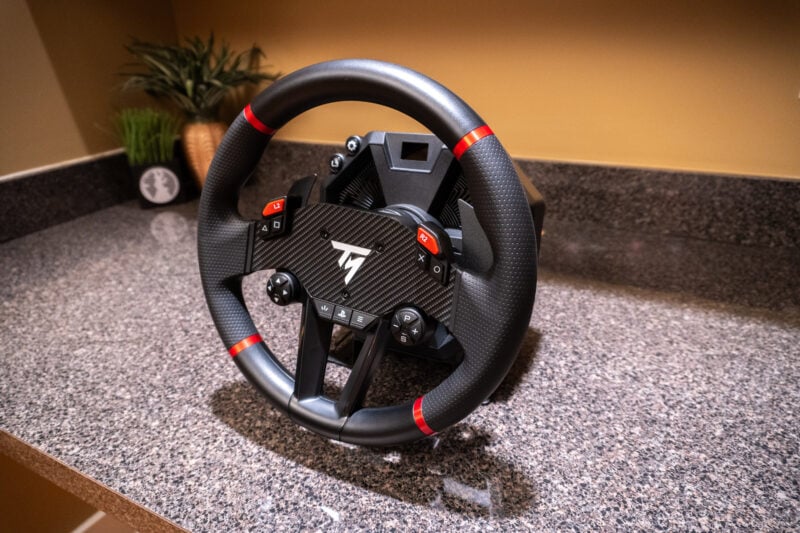
Sportcar Wheel Rim
The “Sportcar” wheel rim included with the T598 is nice to look at, but it’s otherwise the most disappointing part of the whole package.
The top and bottom of the rim is just a hard plastic, and the sides are a soft-touch material which feels cheap to the touch. To make things worse, when you wrap your fingers around the wheel at the 9-and-3 positions, your fingertips will be resting on screw holes in the back where the rim’s plastic pieces are held together. There is also a fairly prominent seam or parting line around the perimeter of the rim that you can feel while driving. These are not major issues, of course, but they are small details that can make an already cheap rim feel even more like a toy.
The buttons leave much to be desired, offering no clear tactile feedback. The directional pad buttons, important for navigating console game menus, are cramped, making it easy to press multiple buttons by mistake.
The layout of the other buttons is also confusing. I would expect the PlayStation buttons to be on the right side of the wheel, opposite the directional pad, as you see on a controller. Instead, you’ll find “encoder” buttons there, used for various purposes based on the game you’re playing.
In Gran Turismo 7, for example, the encoder buttons are used to control the game’s multifunction display feature, like traction control and brake bias. You cycle through the various options to select what you want, then adjust them up and down.
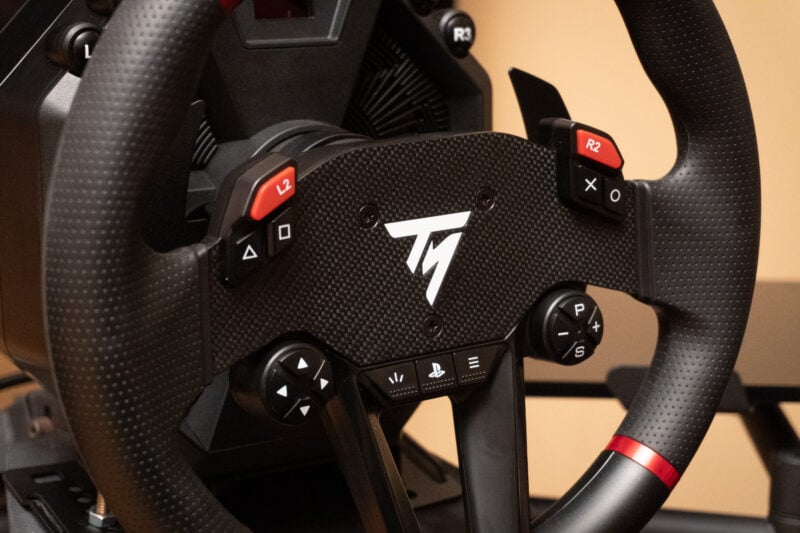
You’ll have to look along the top of the wheel to find the PlayStation’s familiar “cross”, “circle”, “triangle”, and “square” buttons.
Fortunately, softly flared and tapered edges actually make these the best buttons to use on the wheel; they’re just not where I expect them to be. This wouldn’t be an issue once you got used to it, but until then I’ve been hitting a lot of wrong buttons by accident.
The metallic, magnetically activated paddle shifters are a refreshing bright spot of the rim. They feel good to the touch and have a nice tactile thunk.
Of course, it’s important to remember that, thankfully, you don’t have to use the Sportcar rim with the T598 base. If you have another Thrustmaster rim with the Direct Drive quick release adapter, you can use it straight away, or invest in one of the company’s other premium rim options.
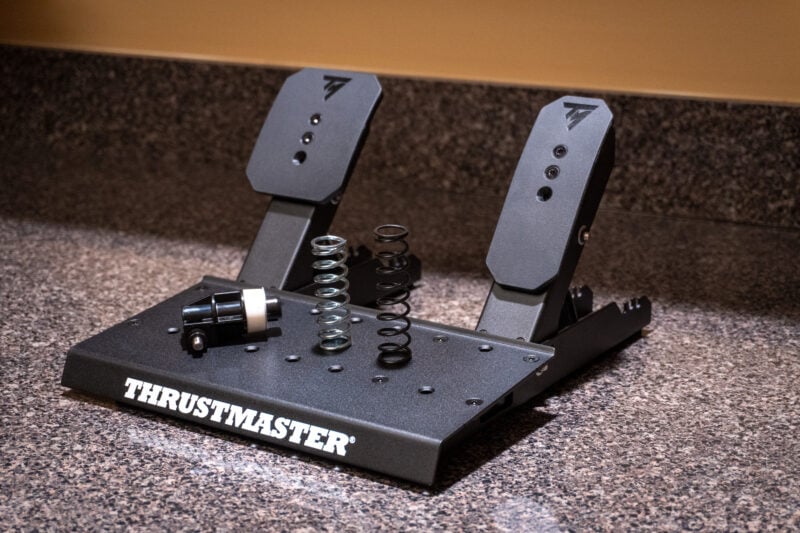
Raceline Pedals LTE
The Raceline Pedals LTE are a nice surprise, constructed with a sturdy metal frame and offering plenty of opportunities for adjustment.
There is some very minor assembly required with the pedals, but it’s simply an issue of placing the springs on the pedal shaft and locking them into your preferred slots. By placing the pedal into a closer slot, you can shorten its travel and increase resistance. Thrustmaster also includes two different springs for the brake pedal so you can get even more stiffness if you prefer.
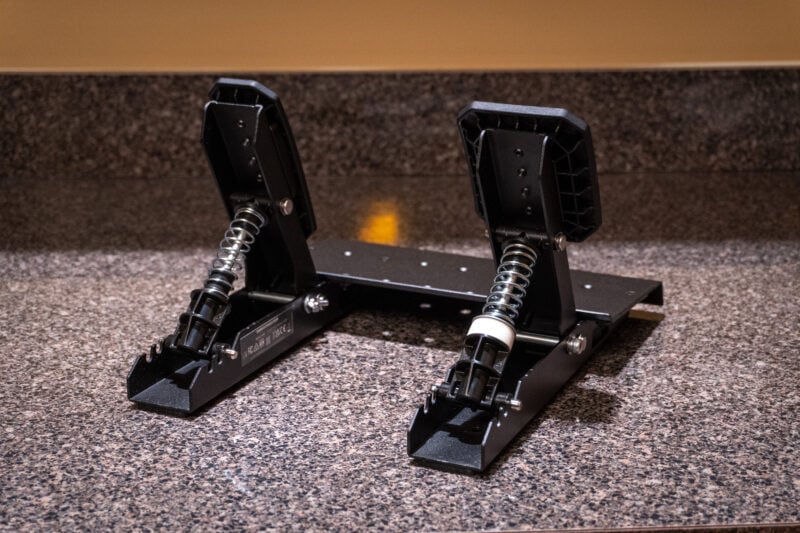
I left the pedals in their standard locations and, as someone who typically uses stiff load-cell brake systems, I went straight to the stiffest settings from the start. I was happy with the amount of travel each pedal provides, and although it’s no load-cell, there’s still a good amount of resistance from the brake that I had no trouble adjusting to.
Although there is obviously no third pedal, Thrustmaster plans to introduce a load-cell brake accessory in 2025 for the Raceline Pedals LTE. With plenty of room on the frame, this coming upgrade will give you both a load-cell brake and frees up the existing brake to be used as a clutch.
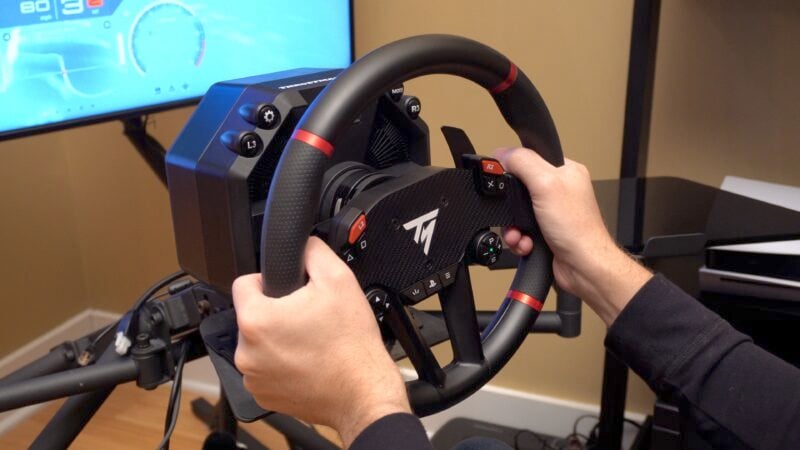
Driving Impressions
I could not wait to hook up the T598 to see what a “direct axial drive” wheel feels like to use and, sure enough, it is, indeed, slightly different from its radial direct drive counterparts.
It’s always difficult to put force feedback sensations into words, but the first that come to mind for me are fast, clear, and responsive. The wheel spins more easily compared to other direct drive wheels, probably because it’s not physically turning a giant magnetic cylinder, nor is it working against a series of cogs and belts. There is a clarity in the force feedback which gives a sense you are getting a more pure signal from the game. This gives the wheel a unique feeling of speed.
The positive is that this allows the wheel to deliver some excellent high-frequency harmonic vibrations, a feature which Thrustmaster appropriately calls “HARMONY”. I’m a big fan of higher-frequency force feedback, and the T598 delivers plenty of it. Although it’s not the most sophisticated implementation I’ve used — Logitech’s TrueForce still has the edge there, in my opinion — it’s very pronounced and well-executed.
On the other end of the spectrum, the “controlled overshoot” which we mentioned earlier, is a surprisingly prominent hallmark of the T598’s performance. “Overshoot” is the maximum force the wheel can deliver in small bursts, such as when a car starts to slide or experiences a sharp change in direction. The T598’s direct axial wheel delivers 5Nm of constant torque but, as Thrustmaster claims, can deliver overshoot power of “+100%”.
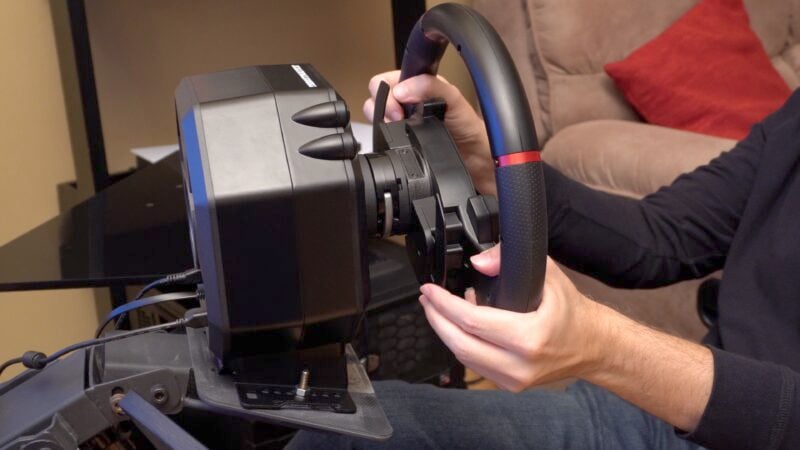
You can definitely feel that overshoot power; those peaks of torque are noticeably much stronger than the wheel’s baseline output. Depending on the settings, it can actually be a bit too much and can feel exaggerated at times, so it’s another aspect that you need to keep in mind when tuning the wheel to your preferences.
If we look at force feedback effects on a spectrum, the T598’s axial drive seems to perform best on the extreme ends. On one end, the delicate, high-frequency harmonics are well pronounced. On the other end, the powerful overshoots are strong and forceful. That middle range, however, is where I find the wheel to be lacking. Perhaps this could be refined with more careful tuning of the advanced settings, and perhaps some people would even prefer it. From my impressions so far, though, those two extreme ends of the spectrum overshadow the rest.
Having said that, the T598’s incredibly fast slew rate is my favorite of all its performance characteristics. “Slew rate” is effectively a wheel’s response rate, or how quickly it can react to your inputs. With the T598, it feels like you can dial in steering responses instantly, making oversteer corrections and countersteering fast and intuitive. I’m not sure it makes me a faster driver, but it felt like I could clean up mistakes rapidly and help keep the car on the road. It gives the wheel a very crisp feel that makes it fun to use.
Another interesting feature is the “GEAR JOLT”, which gives the wheel a literal jolt when changing gears. I typically like this kind of thing and the strength of the gear jolt can be configured in the settings, but even at its lowest power output, it feels a bit too exaggerated and distracting for me, especially when driving slower and less aggressive road cars.

Closing Thoughts
I’m happy to see a company like Thrustmaster pushing the envelope of technology and engineering to bring something entirely new to the market. This is the kind of aggressive and refreshing innovation we have not seen in the wheel market for a while.
No matter how you look at it, at this price, it’s hard to ignore how much value the T598 brings to the table. A PlayStation-compatible, direct-drive wheel, with a mature ecosystem, from a reputable manufacturer like Thrustmaster — that includes a decent set of pedals and a table mount — for less than $500, is a big deal.
In terms of price, the T598 undercuts its direct drive rivals from Fanatec and Logitech by a significant margin, and the axial motor really does deliver some unique performance characteristics. However, it’s obvious there were compromises which had to be made to get the wheel to this price point, and even though it is a solid offering, those compromises could be a hard pill for some people to swallow.
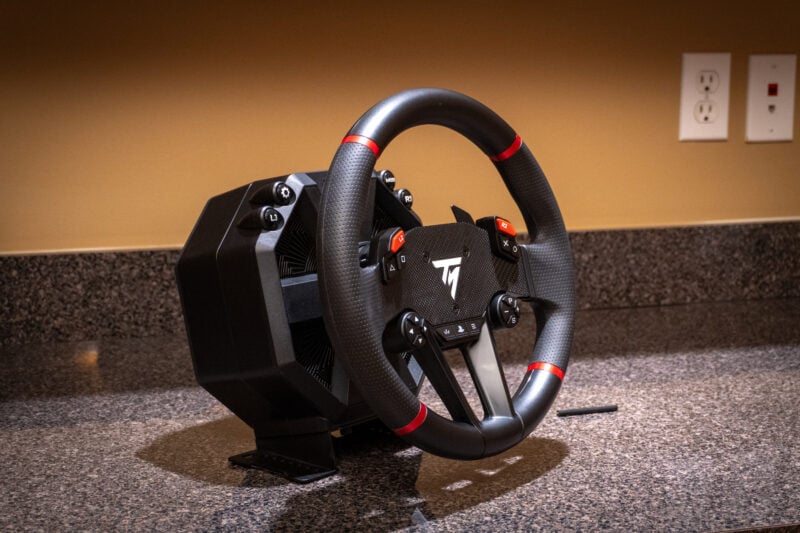
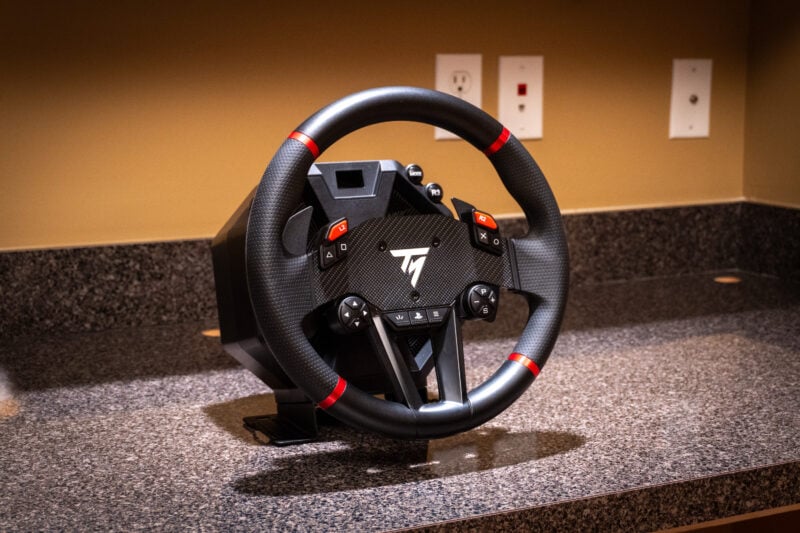
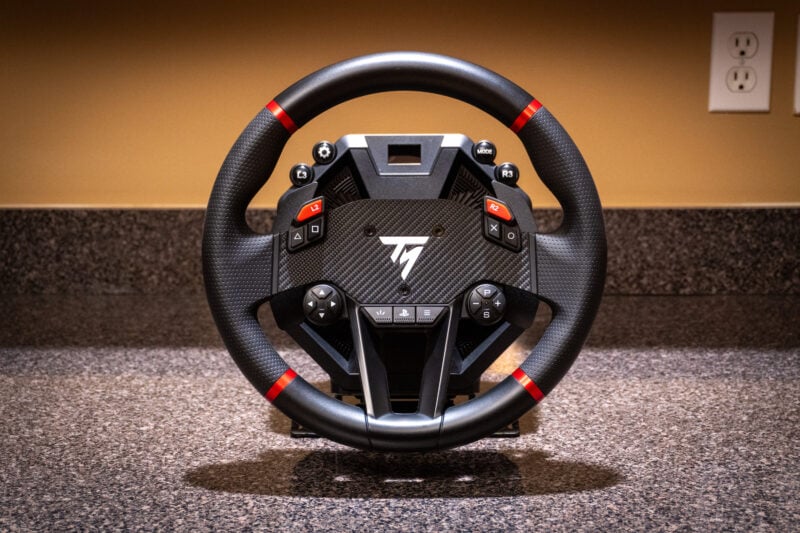
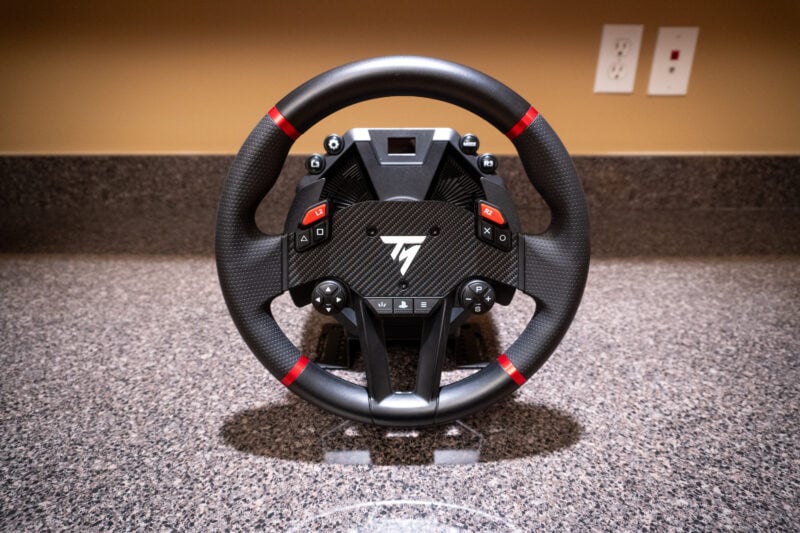


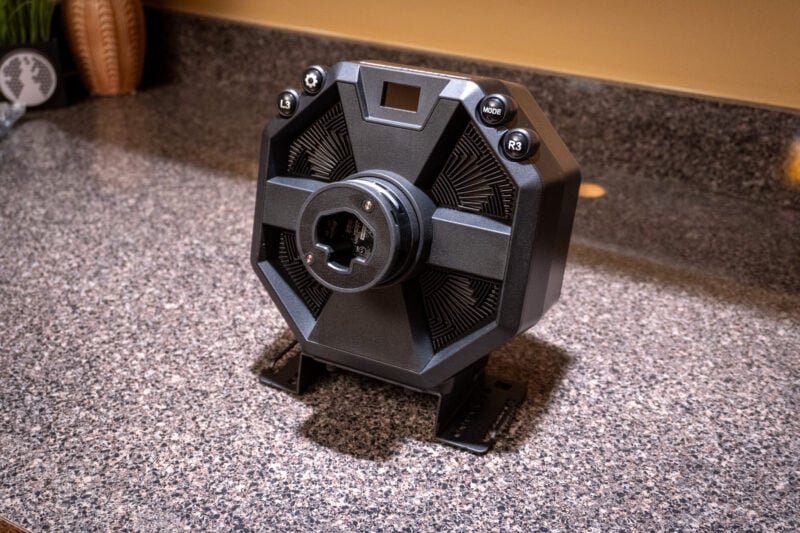
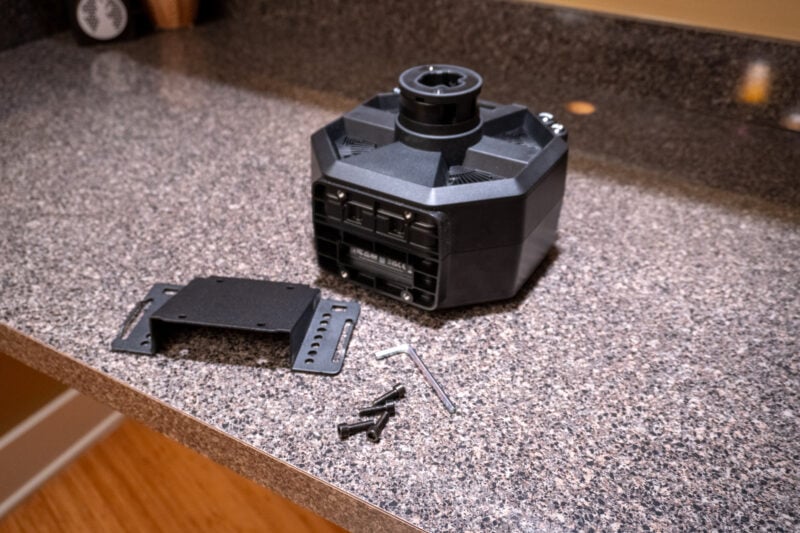


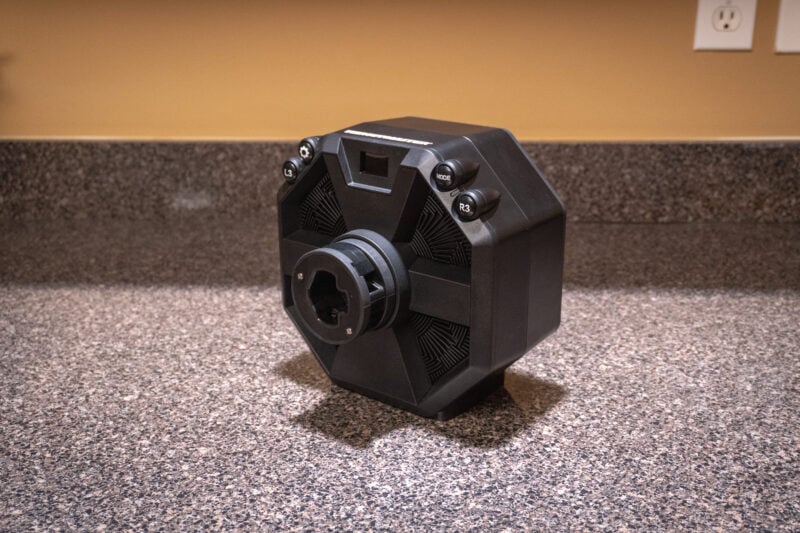
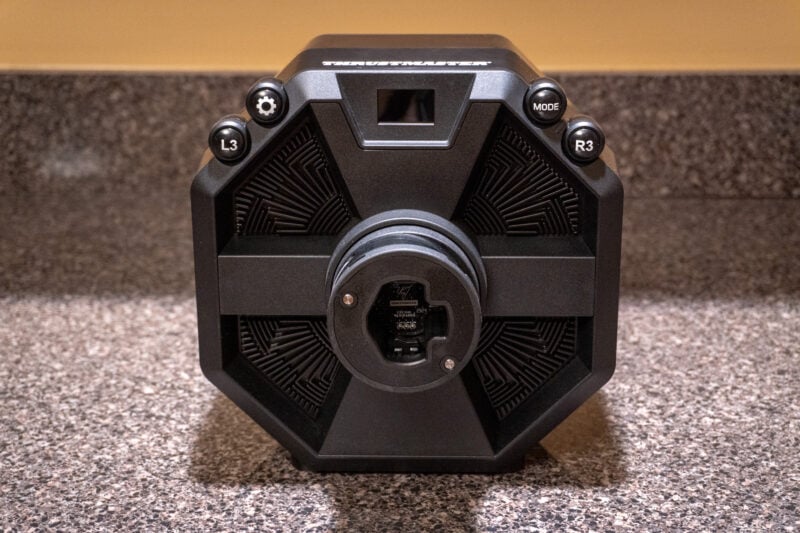
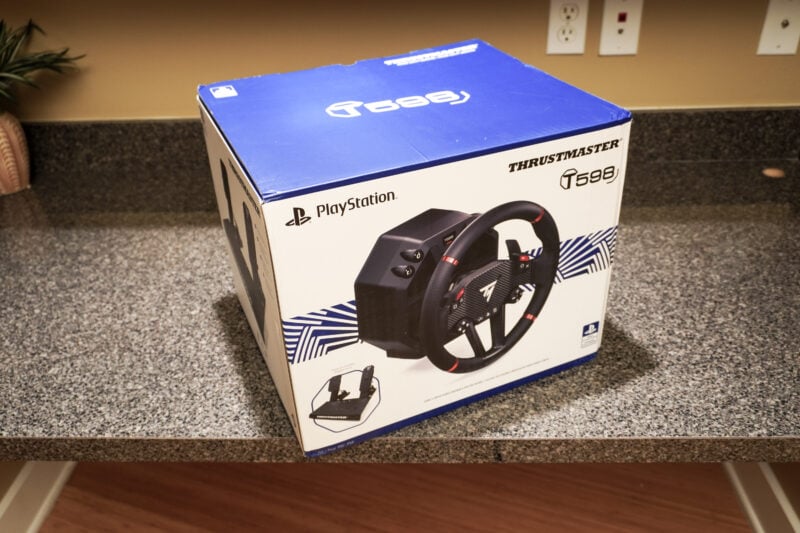

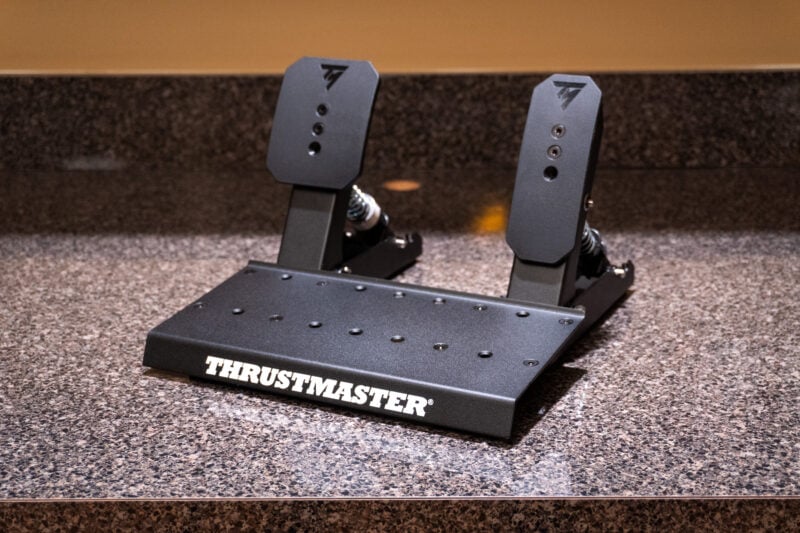
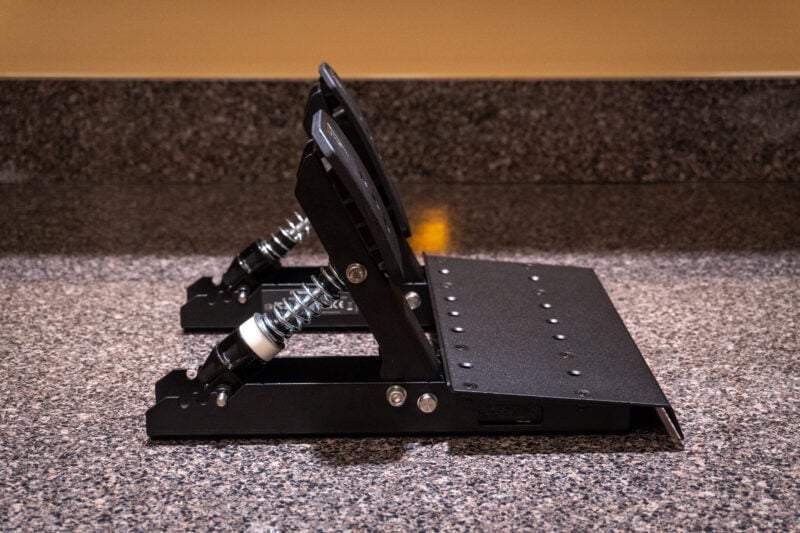


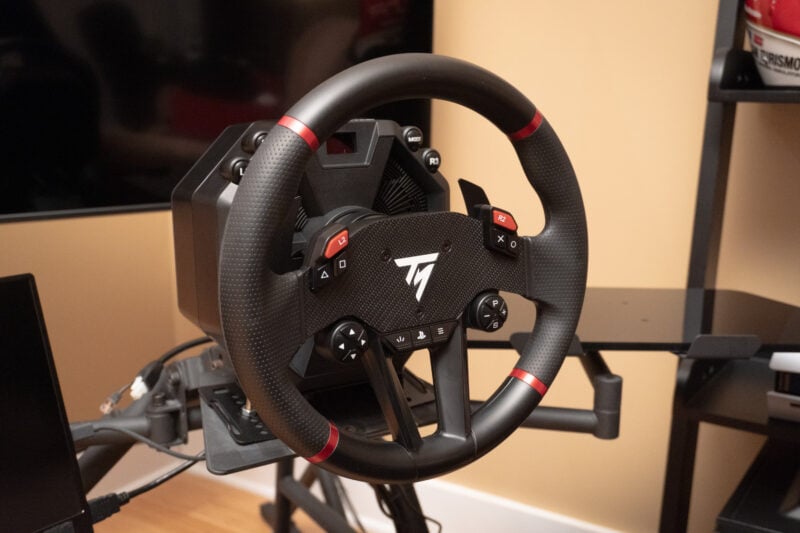

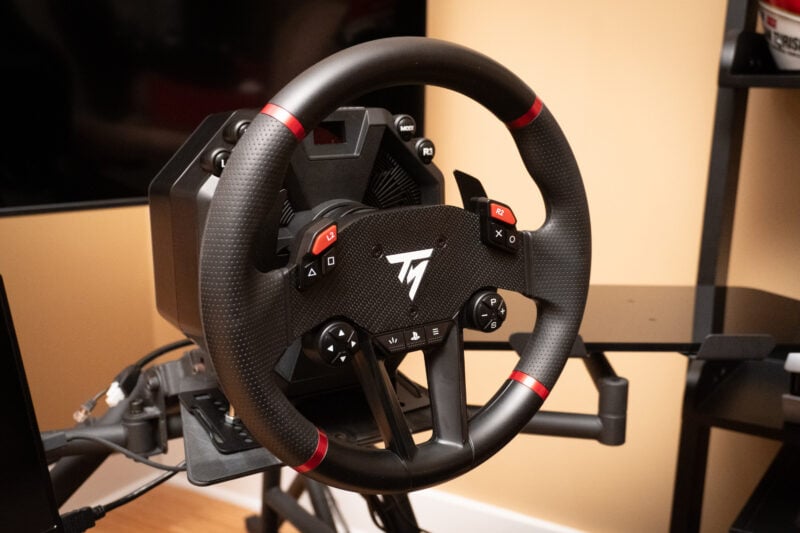

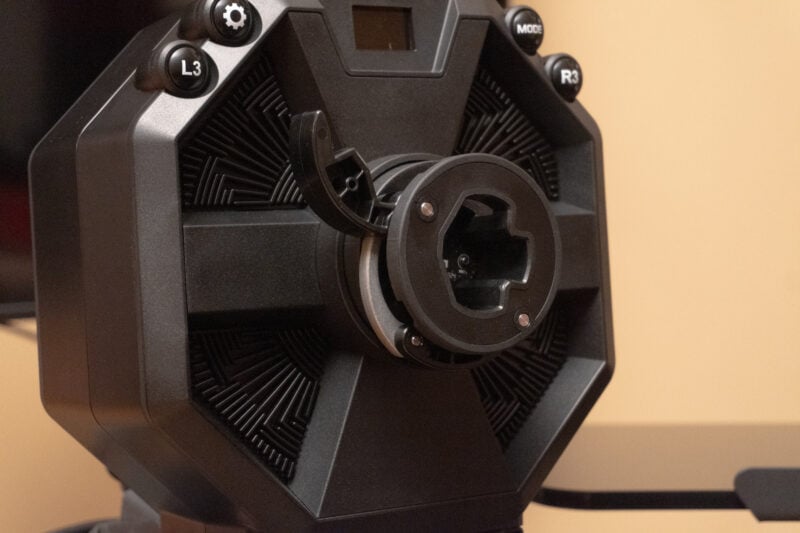
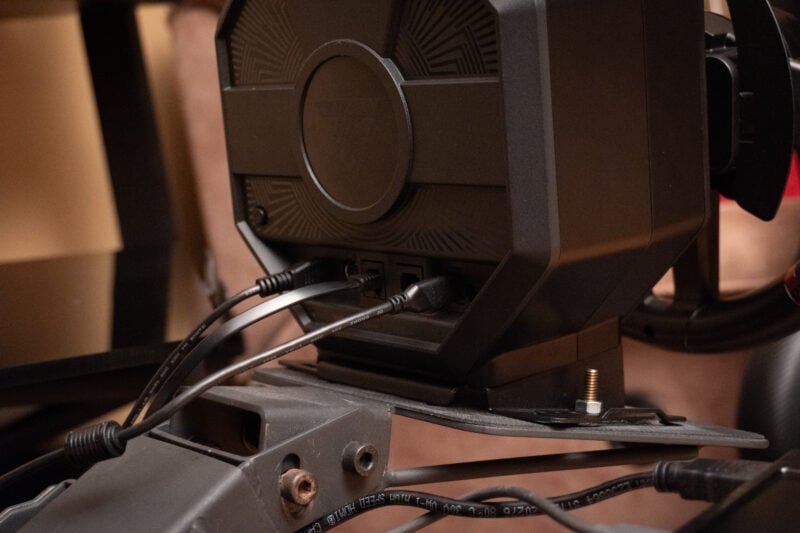
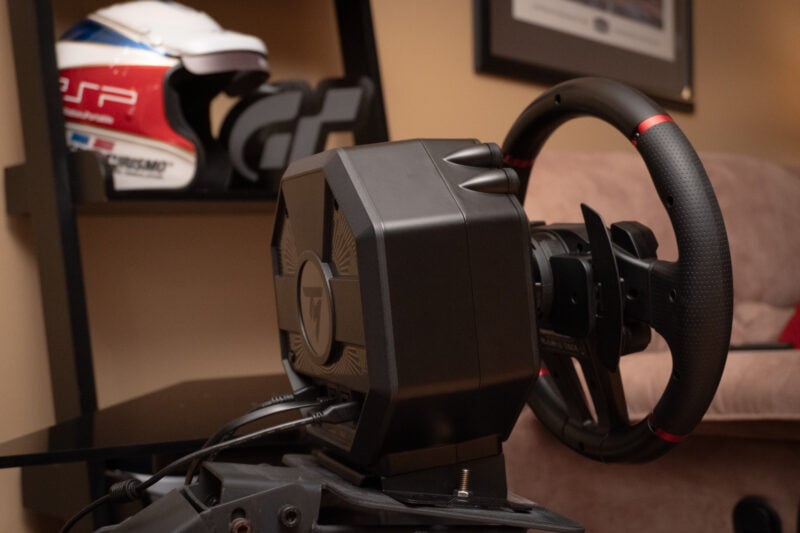
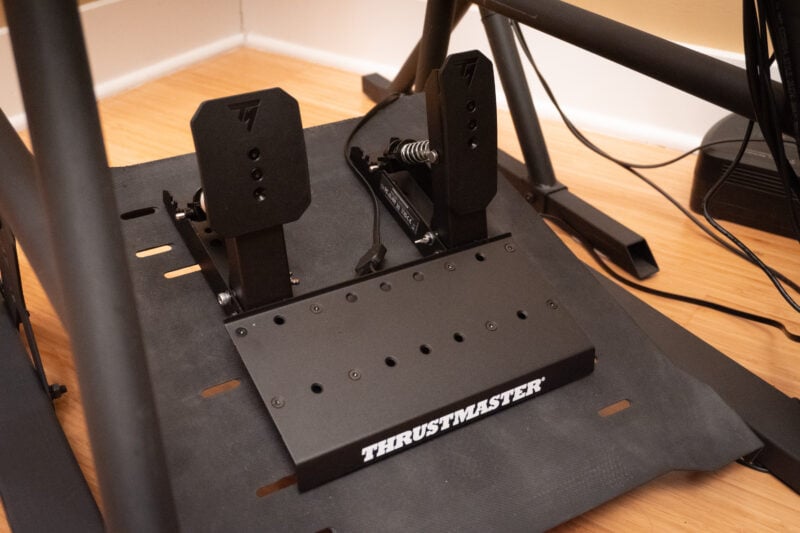
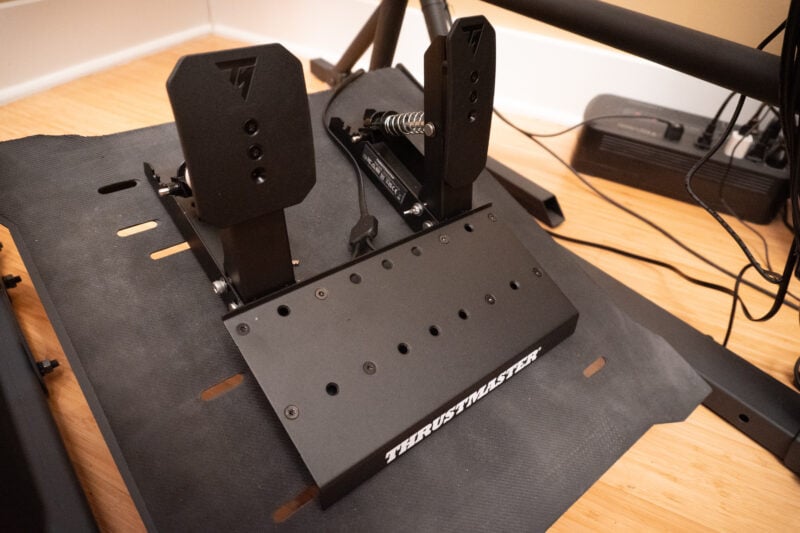
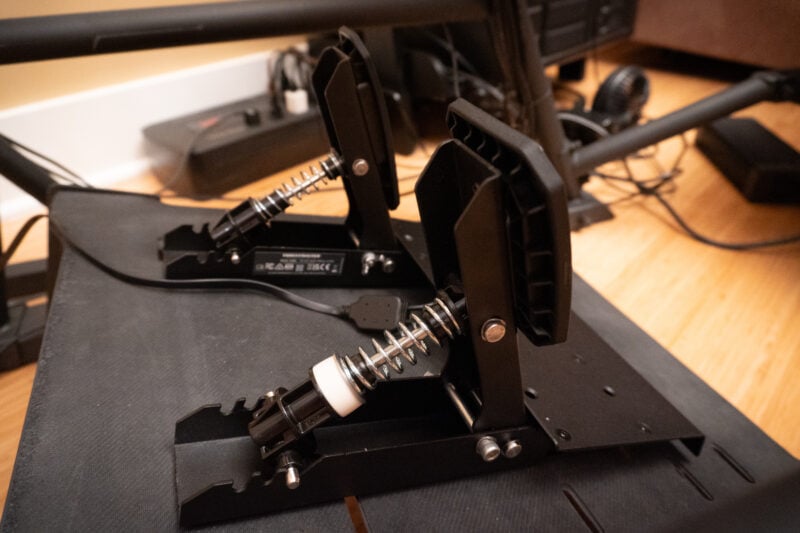
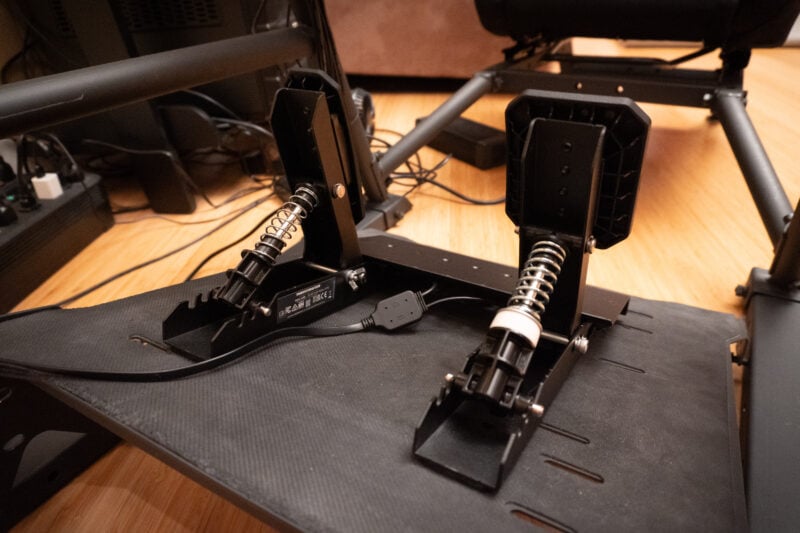

See more articles on Review and Thrustmaster.





